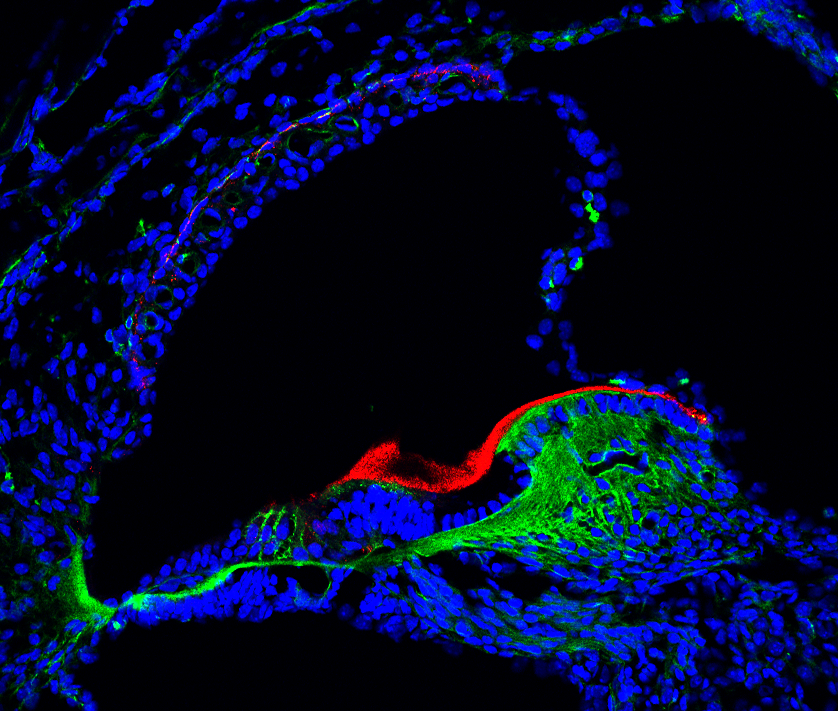What we are excited about:
Assembly, trafficking, and localization of key auditory proteins
Many unique and highly specialized proteins with exquisitely precise subcellular localizations are critical for each step of sound processing. Many forms of hearing loss involve improper assembly, trafficking, and/or regulation of key auditory proteins.
We want to know how critical auditory proteins are assembled, trafficked and properly localized, and how these processes are affected in hearing loss.
We employ a multifaceted experimental toolkit that includes mouse genetics, biochemistry, fluorescent and electron microscopy and cell and tissue culture to investigate our research questions.
Genetics of Hearing Loss and Deafness
Hearing loss is the most common sensory deficit. There are over 100 different gene mutations that lead to hearing loss and deafness. Many of these are in genes with undetermined functions.
What are the functions of each of these deafness-linked genes in auditory processing, and how do mutations affect their function?
We make mouse mutants of deafness-associated genes using CRISPR/CAS9 and then study the structure and function of the auditory system under normal and mutant conditions. This strategy has led to the discovery of a wealth of information about normal auditory function and has the potential to uncover novel therapeutic targets for hearing loss.
Auditory Specializations and their Evolution
Animals have evolved incredibly elegant and sophisticated molecular and cellular strategies to allow for the perception of sound. We are intrigued by species- and class-specific adaptations in auditory genes, molecules and cells.
How do molecular and cellular auditory specializations lead to unique capabilities in the perception of sound?
We apply our experimental toolkit in combination with a comparative evolutionary approach for these experiments.
Development of New Therapies for Hearing Loss
Hearing loss is the most common sensory deficit, affecting both the young and old. Cochlear implants and hearing aids have provided improvements for many people, but they do not perfectly replicate normal hearing, and have a wide range of outcomes. Unfortunately they are not useful for a significant number of patients for a variety of reasons. Thus there is a significant need for novel therapeutic options for the numerous people affected by hearing loss.
How can we effectively deliver useful therapies to hair cells in the inner ear? Can we develop relevant biological, pharmaceutical or genetically-based therapies that can restore normal function of the auditory system rather than by artificially replacing or augmenting function (as with cochlear implants or hearing aids)? What are the impacts to and responses of the central auditory pathways after peripheral rescue of hearing?



